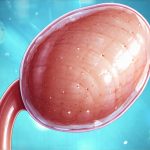Can Using Tampons Trigger Bladder Inflammation?
The question of whether tampon use can contribute to bladder inflammation is one frequently asked by individuals experiencing urinary discomfort. It’s understandable why this concern arises; the close proximity of tampons to both the urethra and bladder, coupled with potential irritation from materials or friction, naturally leads people to wonder if there’s a direct link. However, the relationship isn’t straightforward. Bladder inflammation, clinically known as cystitis, has many causes – bacterial infections being the most common – and attributing it solely to tampon usage is an oversimplification. This article aims to explore this topic in detail, examining potential mechanisms, risk factors, and what steps can be taken if you’re experiencing symptoms. It’s crucial to remember that this information isn’t a substitute for professional medical advice; always consult with a healthcare provider for diagnosis and treatment.
Many instances of bladder irritation attributed to tampon use are likely due to the irritation caused by friction or changes in the vaginal flora, rather than direct inflammation initiated by the tampon itself. The urethra’s proximity means that even minor disturbances can sometimes be perceived as discomfort within the bladder. It’s also important to consider other factors frequently associated with cystitis, such as dehydration, sexual activity, and hygiene practices, which often overlap with periods when tampons are used (menstruation). Differentiating between a simple irritation and true inflammation requires careful assessment by a medical professional, including urine analysis to rule out infection. Understanding the complexities involved is key to addressing concerns effectively and seeking appropriate care.
Potential Mechanisms & Risk Factors
Tampons themselves aren’t inherently inflammatory, but several factors associated with their use could potentially contribute to bladder irritation or increase susceptibility to cystitis. One primary concern revolves around changes in vaginal pH and bacterial balance. Tampon insertion can alter the natural acidic environment of the vagina, which helps protect against harmful bacteria. This disruption may create an opportunity for E. coli, a common cause of UTIs and subsequent bladder inflammation, to ascend from the rectum towards the urethra. Additionally, some individuals might experience allergic reactions or sensitivities to materials used in tampons – such as rayon, cotton, or even fragrance additives – leading to localized irritation that can extend to surrounding tissues.
The type of tampon used also plays a role. Higher absorbency tampons, while convenient for heavier flow, may cause more dryness within the vaginal canal, increasing friction and potentially irritating the urethra. Leaving a tampon in for an extended period exacerbates this risk, as prolonged contact with vaginal tissue increases the chance of irritation and bacterial overgrowth. Furthermore, improper insertion technique can also contribute to discomfort; forcing a tampon into place or inserting it at an awkward angle may cause micro-trauma to the urethral opening. It’s essential to choose the lowest absorbency needed for your flow and change tampons regularly – ideally every 4-8 hours – to minimize these risks.
Finally, individual susceptibility factors are crucial. People with a history of recurrent UTIs or bladder sensitivities may be more prone to experiencing irritation from tampon use. Those with compromised immune systems or underlying health conditions that affect the urinary tract might also face an elevated risk. It’s important to note that correlation doesn’t equal causation; just because someone experiences bladder discomfort during menstruation, while using tampons, does not automatically mean the tampons are the root cause. A thorough evaluation is always necessary.
Identifying Symptoms of Bladder Inflammation
Recognizing the symptoms of bladder inflammation is the first step towards seeking appropriate care. While mild irritation might resolve on its own, more pronounced symptoms often indicate a need for medical attention. Common indicators include: – A burning sensation during urination (dysuria) – Frequent urge to urinate, even when little urine is present – Passing small amounts of urine at a time – Cloudy or bloody urine – Pelvic pain or discomfort – which can sometimes be mistaken as tampon-related irritation.
It’s important to differentiate these symptoms from normal menstrual cramping or mild vaginal discomfort. Severe pelvic pain, fever, chills, back pain, or nausea alongside urinary symptoms are red flags that warrant immediate medical attention, as they could indicate a kidney infection – a more serious complication of UTIs. Don’t hesitate to contact your healthcare provider if you experience any of these severe symptoms. Self-treating bladder inflammation can lead to complications and delay proper diagnosis.
Prevention Strategies & Tampon Alternatives
Preventing bladder irritation associated with tampon use often involves proactive measures focusing on hygiene, tampon selection, and urinary health. Staying well-hydrated is paramount; adequate fluid intake helps flush out the urinary tract and reduces bacterial concentration. Practicing good personal hygiene – wiping front to back after using the toilet – minimizes the risk of introducing bacteria from the rectum into the urethra. Choosing tampons made from 100% organic cotton, avoiding scented varieties, and selecting the lowest absorbency needed can all contribute to minimizing irritation.
For individuals who consistently experience bladder issues during menstruation, exploring alternative menstrual products is a viable option. – Menstrual cups offer a reusable and often less irritating alternative to tampons. – Pads, available in various absorbencies and materials, provide external protection without direct urethral contact. – Period underwear offers another comfortable and discreet solution for managing menstrual flow. If you suspect tampon use contributes to your bladder issues, consult with your healthcare provider about switching to one of these alternatives or discussing other preventative strategies tailored to your specific needs.
When to Seek Medical Attention
Determining when to seek medical attention is crucial. Mild discomfort that resolves quickly after removing the tampon might not require a doctor’s visit. However, if symptoms persist for more than 24-48 hours, worsen significantly, or are accompanied by other concerning signs – such as fever, chills, back pain, or bloody urine – it’s essential to consult with a healthcare provider. A urine analysis can help determine whether an infection is present and guide appropriate treatment.
Treatment for bladder inflammation typically involves antibiotics if a bacterial infection is identified. Other supportive measures include drinking plenty of fluids, avoiding caffeine and alcohol (which can irritate the bladder), and over-the-counter pain relievers to manage discomfort. Remember that self-treating can mask underlying conditions or lead to antibiotic resistance. A professional diagnosis ensures you receive the most effective and appropriate care for your specific situation. It’s also important to discuss any concerns about tampon use with your doctor, who can provide personalized advice and guidance based on your individual health history and circumstances.





















